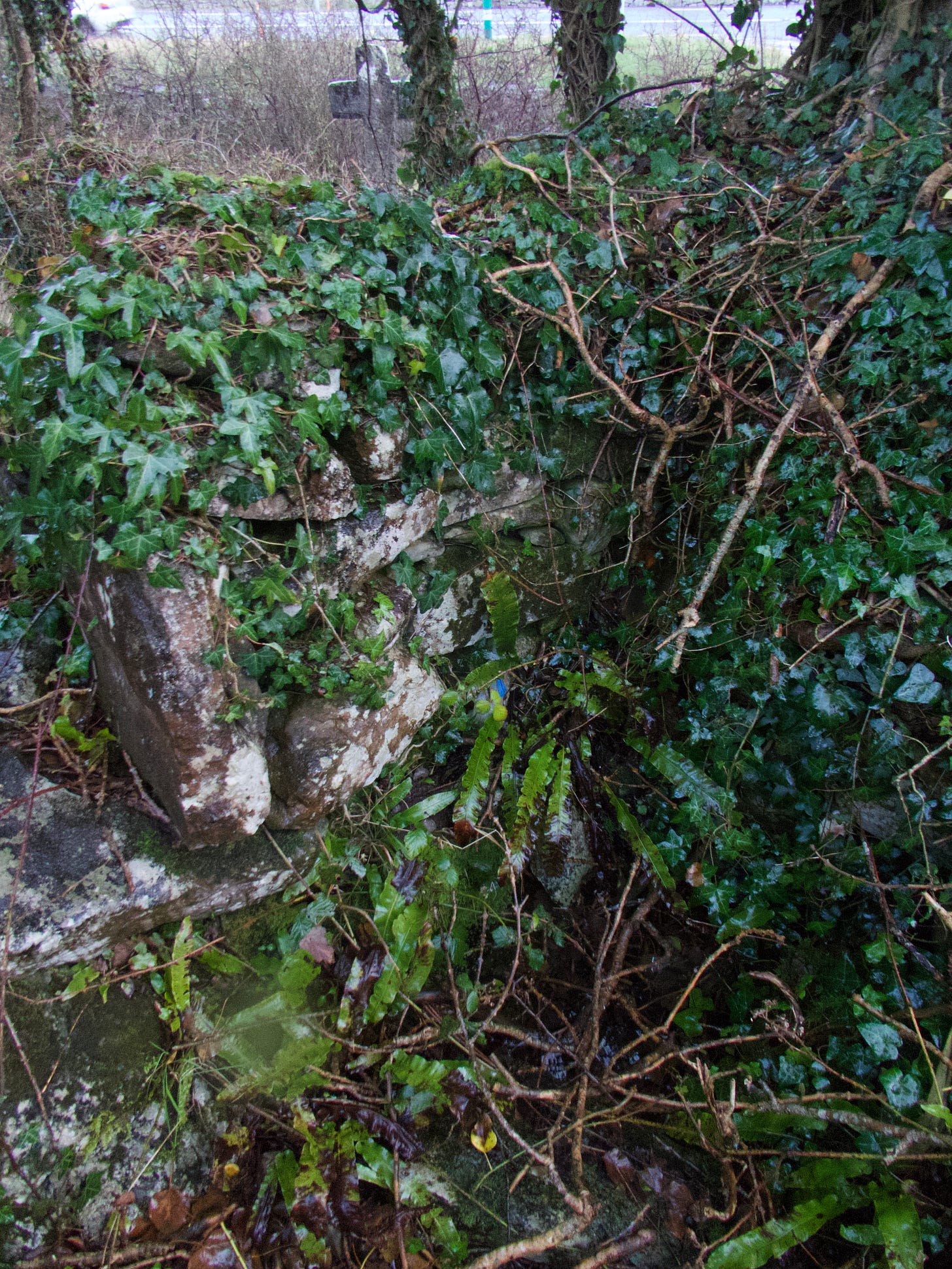St Colman’s Well, Kinvarra, County Clare
And may these characters remain
When all is ruin once again- W.B. Yeats, from a poem carved on his restored tower house at Thoor Ballylee
Who once came here? There will be locals who know. There will be locals who remember this place when it was not eaten by briar, and when the rags tied to the branches of the clootie tree were fresh, not rotten and damp. When the broken picture frames contained devotional images, and when the water ran clear. When the rounds were still made and the prayers still said.
There will be people like that around here, but I don’t know where to find them.
There are numerous wells dedicated to St Colman around these parts. I presume that this one, like others I have visited, is named for the local saint Colman Mac Duagh, though there are perhaps a dozen St Colmans in the country: a fact that alone testifies to the astonishing number of saints that this island once gave birth to. Before the ‘Great Schism’ between the Orthodox East and the Roman Catholic West, which was formalised in 1054 when each side excommunicated the other, around 3000 Irish saints were named by the church. After the Schism - from 1054 right through to the present - there have been just three. Such was the early surge of spiritual power that made this island and its people, before civilisation tied the church down.
But the power is fading now. This well is dry. And I wonder what came first: the end of the flowing waters, or the end of the visits from the people. Which is cause, and which effect?
Abandoned places are always melancholy. Sometimes the melancholy is the attraction. St Colman’s well sits on a major road junction - as ‘major’ as road junctions get in the Burren, anyway - but you wouldn’t find it unless you were looking. In amongst the trees, wrapped in brambles and ferns, up some slimy stone steps which themselves are awash with rioting greenery, is an old stone cross, leaning slightly askew. Look closer, and you’ll see one or two faded rags still tied to the tree beside it:
Once you begin to acclimatise - you’ll have to stay still, because every movement will cause a bramble scratch somewhere on your body - you will begin to see remnants of worship everywhere. Old stone ridges covered in moss. Rocks which might once have marked the stations of the cross. Sad old glass picture frames, with no images behind them, as if nature herself has taken on the role of iconoclast:
St Colman’s well, I found out later, was once an eye well. How many people have been cured or eased by prayer and the waters here over the centuries? Perhaps one day they will be again. But for now, the new Ireland of road junctions and roadside coffee trailers is in the ascendant. The stone cross seems patient though. Let’s see which outlasts the other.









It seems to me these places actually benefit from their being in some greater or lesser state of ruin, rather than being kept tidily and efficiently dispensing eye-cures and such like strip mall vending machines.
Couple of years back I had chance to see the suburban shopping mall of my late teens while visiting upstate New York for the first time in nearly 40 years. It was there I'd found my first job, and first girlfriends, and got up to all the typical day-glo stupidities of American teens in the early eighties. And this once mighty flagship of American consumerism was now an abandoned ruin. Looking through the dusty doors I could see the boarded-up windows and collapsed ceiling tiles. The once teeming parking lot was empty and everywhere cracked by spunky weeds enthusiastically pushing through the pavement.
And I was simultaneously gut-punched by a wave of nostalgia, of being in the presence of the ghosts of my youth, thousands of memories of faces and holidays and summer nights long gone, but also a thrilling sense that I had at last found /proof/ that none of this horrific culture would endure. I actually cried but I was overjoyed.
This self-important place had once been filled with grubby regional managers, security guards, disappointing schedules posted for barely-paid part-time employees. And now it was dead and rapidly decaying, along with the last remnants of the countless petty commercial tyrannies it used to visit on so many. This entire culture is junk in the waiting. Seeing that felt like triumph.
Ivy is quick and brambles quicker. The trees will come. I guess you might date it to when the road was modernised and its foundations and drainage altered the lie of the land. One can guess the brambles and trees will come for the road in due time.
Names last longer, tears and love even longer - memory return fresh to the land.